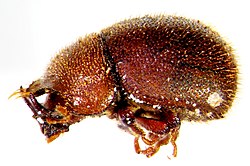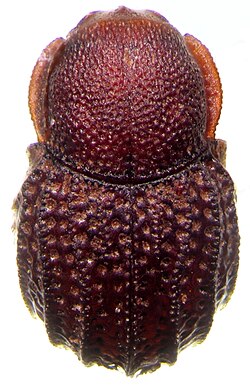This article includes a list of general references, but it lacks sufficient corresponding inline citations .(July 2024) |
| Ciidae | |
|---|---|
 | |
| Falsocis brasiliensis | |
| Scientific classification | |
| Kingdom: | Animalia |
| Phylum: | Arthropoda |
| Class: | Insecta |
| Order: | Coleoptera |
| Suborder: | Polyphaga |
| Infraorder: | Cucujiformia |
| Superfamily: | Tenebrionoidea |
| Family: | Ciidae Leach in Samouelle, 1819 |
| Subfamilies | |
| Synonyms | |
| |
The minute tree-fungus beetles, family Ciidae, are a sizeable group of beetles which inhabit Polyporales bracket fungi or coarse woody debris. [1] Most numerous in warmer regions, they are nonetheless widespread and a considerable number of species occur as far polewards as Scandinavia for example.

